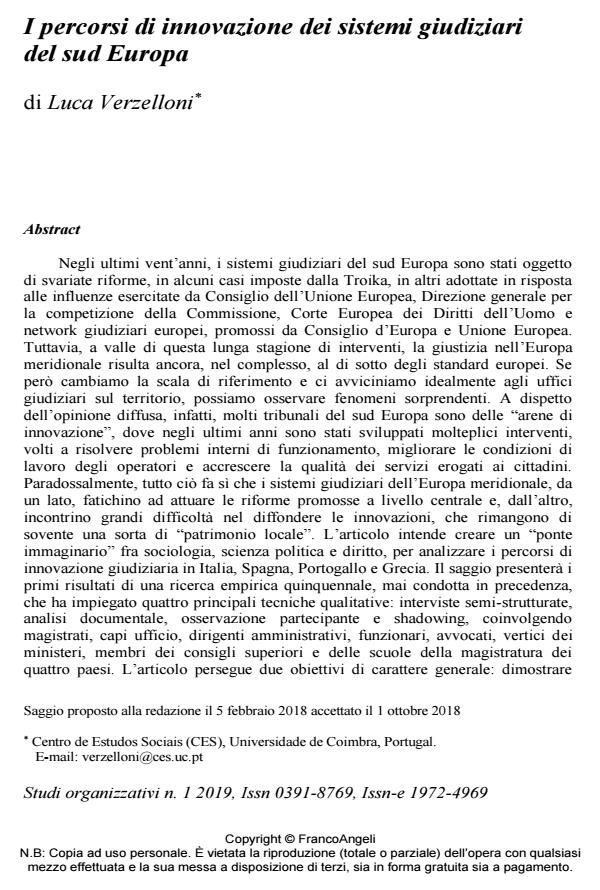The paths of innovation of the judicial systems of Southern Europe
Journal title STUDI ORGANIZZATIVI
Author/s Luca Verzelloni
Publishing Year 2019 Issue 2019/1
Language Italian Pages 26 P. 97-122 File size 330 KB
DOI 10.3280/SO2019-001004
DOI is like a bar code for intellectual property: to have more infomation
click here
Below, you can see the article first page
If you want to buy this article in PDF format, you can do it, following the instructions to buy download credits

FrancoAngeli is member of Publishers International Linking Association, Inc (PILA), a not-for-profit association which run the CrossRef service enabling links to and from online scholarly content.
Although in recent years the Southern European judicial systems have been subjected to several reforms - in some cases, imposed by the Troika and, in other cases, adopted under the influence exerted by Council of the European Union, Directorate-General for Competition, European Court of Human Rights and judicial networks, promoted by European Union and Council of Europe - many empirical evidences show that the quality of justice is still, on the overall, below the European standards. But if we change the scale of reference, we can see that many judicial offices of Southern Europe are "arenas of innovation". However, one the one hand, the Southern European judicial systems struggle to implement the reforms promoted at the central level, and on the other hand, they have great difficulty in spreading the innovations, which often remain a sort of "local heritage", intrinsically linked to the courts and their practitioners. All this represents a paradox that characterizes the Southern European judicial systems. This article wants to build an "ideal bridge" among sociology, political science and law, to analyse the paths of judicial innovation in Italy, Spain, Portugal and Greece. The paper is the result of a five-year empirical research and aims to promote an extended debate on the perverse and paradoxical effects of the continuous promotion of innovation, both in the judicial systems and in other sectors of the public administration.
Keywords: Innovation, justice, Southern Europe, room for manoeuvre, paradox, loosely coupled systems
Luca Verzelloni, I percorsi di innovazione dei sistemi giudiziari del sud Europa in "STUDI ORGANIZZATIVI " 1/2019, pp 97-122, DOI: 10.3280/SO2019-001004